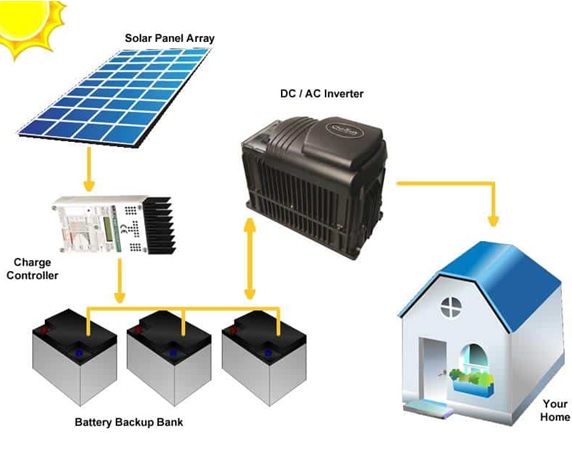 Albert Einstein first described the solar photovoltaic (solar PV) phenomenon and won the Nobel Prize for his surprising discovery. Bell Laboratories made the first solar voltaic cells in 1954. In 1960, NASA adopted this technology, and the widespread PV cell production was popular in small electronics like calculators and wristwatches in the early 70s.
Albert Einstein first described the solar photovoltaic (solar PV) phenomenon and won the Nobel Prize for his surprising discovery. Bell Laboratories made the first solar voltaic cells in 1954. In 1960, NASA adopted this technology, and the widespread PV cell production was popular in small electronics like calculators and wristwatches in the early 70s.
Specific materials exhibit the photoelectric property that occurs at the atomic level. The principle is the same as the way the solar photons are absorbed by the semiconductor material that releases negative electrons.
Using two charged layer – positive and negative, the electrons in the negative layer gets released and start flowing towards the positive layer. When the sun intensifies, the flow will be rapid and much stronger current.
The semiconductor layers in the photocell are manufactured from silica wafers that are charged oppositely by coating with a specific material. The front part of the cell comprises of the negatively charged layer and is coated in phosphorous, and the back part is the positive charged later coated in boron.
The sunlight strikes the negatively charged layer that results in freeing up the electrons which are absorbed by the positively charged layer. A metal coating separates both of the layers, and the flow of electrons will be directed towards the wires. By providing a load between layers, both the current and the DC power can be generated.
Understanding PV Cells and Modules –
Every photovoltaic cell is known as a cell, and when the PV cells are combined, they form a PV module. The most popular modules available currently consist of 60 cells and 72 cells. A 60 cell module produces 220-280 watt power, which varies from a manufacturer to another, whereas a 72 cell produces 280-340 watt power.
Understanding Solar Inverter –
In a solar PV system, the primary DC energy comes from the cell. But the DC power is not commonly used in the household. Though a solar PV system uses DC appliances and lights directly, it’s quite common to find AC appliances.
Generally, you need AC for daily living like vacuums, washing machines, TVs, computers, etc. For DC to AC conversion, solar PV kits need an inverter. Inverters are quite popular, and most new cars come with a DC to AC inverter that is capable of plugging 120 Volt appliances.
Understanding the Storage –
You can store the solar energy produced by the solar PV kits in different ways like DC batteries, hot water tanks, and the On-Grid or Net Metering.
What is the Working Principle?
Generating your own electricity has never been that much easier. With the current regulations in Feed in the Energy Laws, all homeowners can be able to produce their energy and use the grid to store the excess amount. It means the meter spins backward when you have excessive energy and goes forward when you have more demand than the rate of production.
All you need is to install a DIY solar PV kit that consists of a PV panel, micro-inverters under every panel, mounting hardware, and a wiring kit. When it’s done, consider plugging your electrical grid into your existing breaker box.
You will require a safety disconnect and should check with your local utility company to make sure that your meter is bi-directional, which will help you save more in the long run.
Bottom Line –
If you want to know more about solar PV kits, you should contact Latitude51 Solar at https://www.latitude51solar.ca/info. We’ll get back to you as soon as possible!

